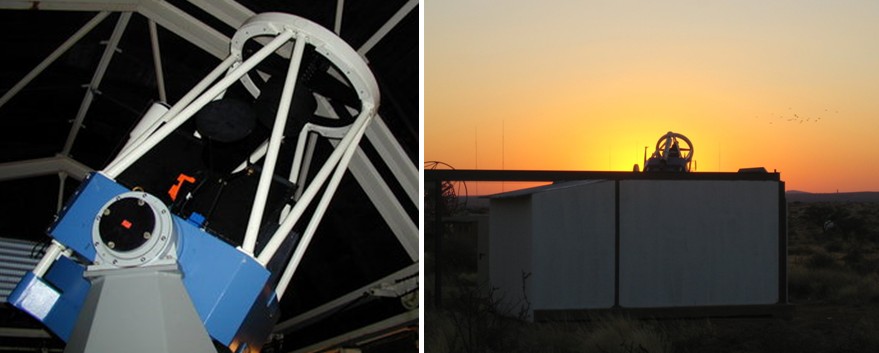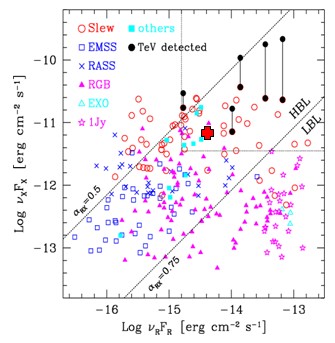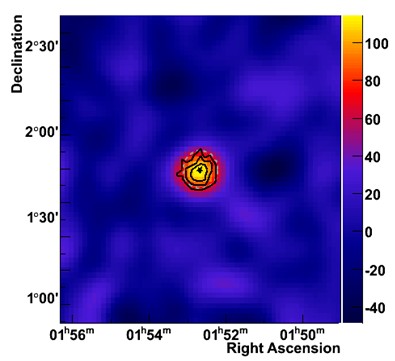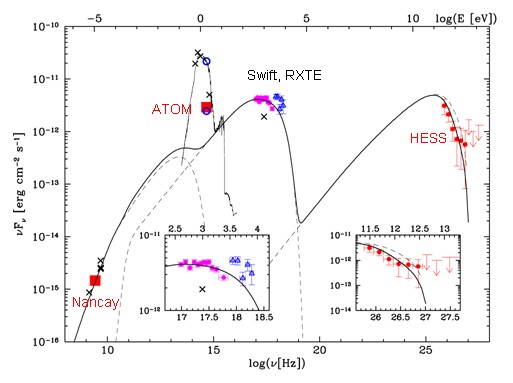Gamma-rays from the BL Lac object RGB J0152+017
March 2008

The active galaxy RGB J0152+017, at a redshift z=0.080, was selected as target for H.E.S.S. observations because of its relative high radio and X-ray flux, characteristic for TeV-emitting active galaxies (Fig. 1). "RGB" denotes the Rosat/Green Bank catalog of objects detected in coincidence in Rosat X-ray data and in the Green Bank 5 GHz radio catalog. H.E.S.S. observed the source from Oct 30 to Nov 14, 2007 for a total of ~15 h live time. A preliminary on-site analysis showed a significant gamma-ray excess from the direction of RGB J0152+017, which was communicated by an Astronomer's Telegram, alerting other observatories. Follow-up observations were performed with the ATOM optical telescope on the H.E.S.S. site, with the Nancay radio telescope, and by triggering target-of-opportunity observations with the Swift and RXTE X-ray instruments. The offline analysis of H.E.S.S. data confirmed the detection (Fig. 2); the source has a flux of about 2% of the flux from the Crab nebula and a spectrum with photon index of approximately 3.
Modeling of the wide-band emission spectra of active galaxies is complicated due to the high variability of these objects, which on the one hand requires simultaneous observation in the different wavelength regimes of interest, and which on the other hand do not permit the use of steady-state solutions. In case of RGB J0152+01, virtually simultaneous data was recorded in the radio, optical, X-ray and gamma-ray domains. In none of these, significant variability is seen, implying that the source was in a steady, non-flaring state. The measured energy output across the electronmagnetic spectrum is shown in Fig. 3. It can be interpreted in a SSC model (Katarzynski et al. 2001), where a rapidly moving compact blob of high-energy electrons inside the AGN jet emits synchrotron radiation and creates, by upscattering of sychrotron quanta by electrons, gamma rays, forming a double-humped spectrum. Optical frequencies receive a dominant contribution of thermal radiation from the host galaxy; an additional extended sychrotron source needs to be postulated to explain the radio data.
References:
Discovery of VHE gamma-rays from the high-frequency-peaked BL Lac object RGB J0152+017", H.E.S.S. collaboration, F. Aharonian et al., arXiv:0802.4021


